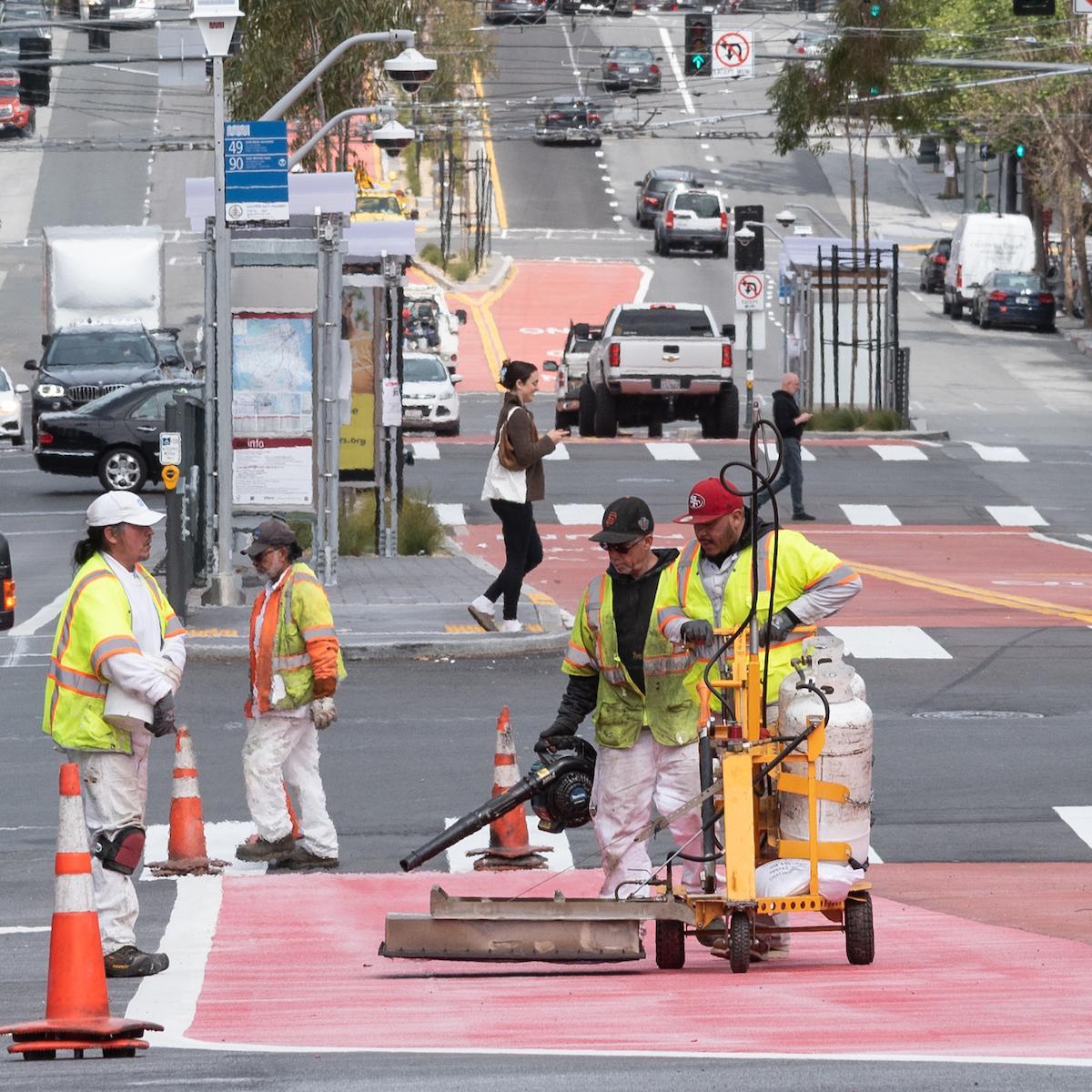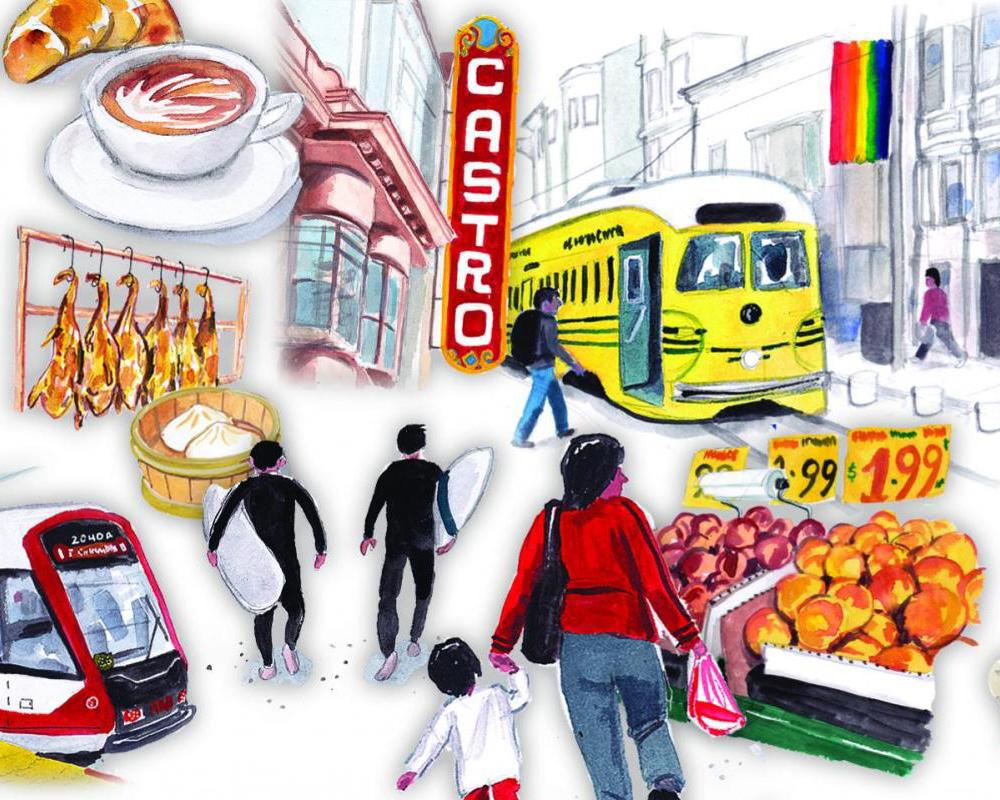Wherever you choose to eat, drink and shop this Small Business Week, we’re ready to help you Go Local. That’s because we’re always working to improve the trips you take with us.
As you ride Muni to small businesses this week and beyond, we wanted to share a little slice of what we’re doing to provide you the best service we can.
Our Muni Forward program is a great example. Today, you will hear from our public outreach team about how Muni Forward is making your rides more reliable citywide – and why your feedback is so critical to the work.
Muni Forward: Our focus on reliable service

SFMTA crews helped us make rides more reliable on Van Ness Avenue. Here, they put the finishing touches on a new transit lane.
Over the last 10 years through Muni Forward, we have made more than 100 miles of reliability improvements on heavily used Muni corridors. This includes 75 miles of dedicated transit lanes.
An in-depth report shows these Muni Forward projects have:
- Resulted in up to 51% more reliable transit service
- Reduced travel times by up to 35%
How does this all happen in practice? SFMTA Public Outreach and Engagement Manager Kate McCarthy shares the human story behind the numbers.
Constantly evaluating data
"Our planners and engineers are constantly looking at data to see where Muni’s getting slowed down, where there are challenging spots in the system,” McCarthy says.
“That’s where Muni Forward comes in – it's a toolkit for improving transit service,” McCarthy explains. “It’s a set of tried-and-true best practices we can apply to fix reliability issues.”
These best practices can include:
- Dedicated transit lanes
- Transit signal priority – these smart signals hold green lights longer for Muni
- Bulb-outs at bus stops – ensuring buses no longer have to pull in and out of traffic
Meeting communities where they are
Once planners identify an issue, public outreach staff enter the equation. They gather community feedback to help us understand root causes.
“There could be a lot of reasons buses slow down,” McCarthy explains. “So, we reach out directly to riders to learn about the issues they’re seeing."
“Our teams show up where they are, and in the language they’re communicating in,” McCarthy says.
Multilingual outreach staff speak with riders on buses and at busy transfer stops. They table at farmer’s markets and school events. They communicate on WeChat, Instagram and other popular digital channels.
From there, our teams turn findings into action. “We’re able to pair what we see in the data with personal testimony – that helps us match the right solution to the right problem,” McCarthy says.

Go Local campaign artwork. Credit: Dan Bransfield.
Opening the door to lively neighborhoods
The results? “Muni is a really efficient way to get around and grow your world,” McCarthy says. “San Francisco is such a special place to have all of these different neighborhoods – and Muni helps you get to 100% of them.”
Comments are for the English version of this page.